Table of Contents
Setting up the aquarium: We would like to start with ours Step by step instructions how to one Set up the aquarium properly familiar with the Planning. Everything is based on this pillar of the 10 steps and therefore you should pay attention to a few things.
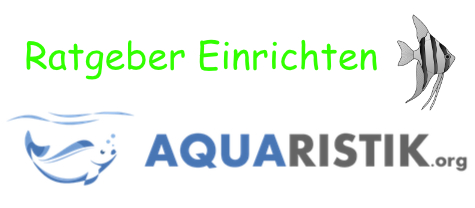
As already mentioned, the main focus here is on things that Beginner should note.
We have these Instructions divided into three parts.
Part 1 deals with the planning and answers the most important questions that you should definitely ask yourself before buying. The second chapter then deals with purchasing and advice. Here we provide important tips and tricks. And in the third chapter you will find everything you need to know about the preparation before you go to the constellation.
Part 2 of the guide to setting up the aquarium then deals with setting up the aquarium and the actual setup. There you will also find everything you need to know when it comes to technology.
Part 3 and thus also the last part, compiles knowledge about running in the aquarium. Of course, we have to fill in the water first. There are also a number of tips and tricks. In addition, you will also be able to use finite fish here. In addition, we deal here with the care, which entails everything an aquarium.
The first e-book “Setting up an aquarium” on how to set up an aquarium with us will also be available shortly. But now enough of the words. We want to start with the detailed planning.
Setting up an aquarium: 10 steps to setting up an aquarium
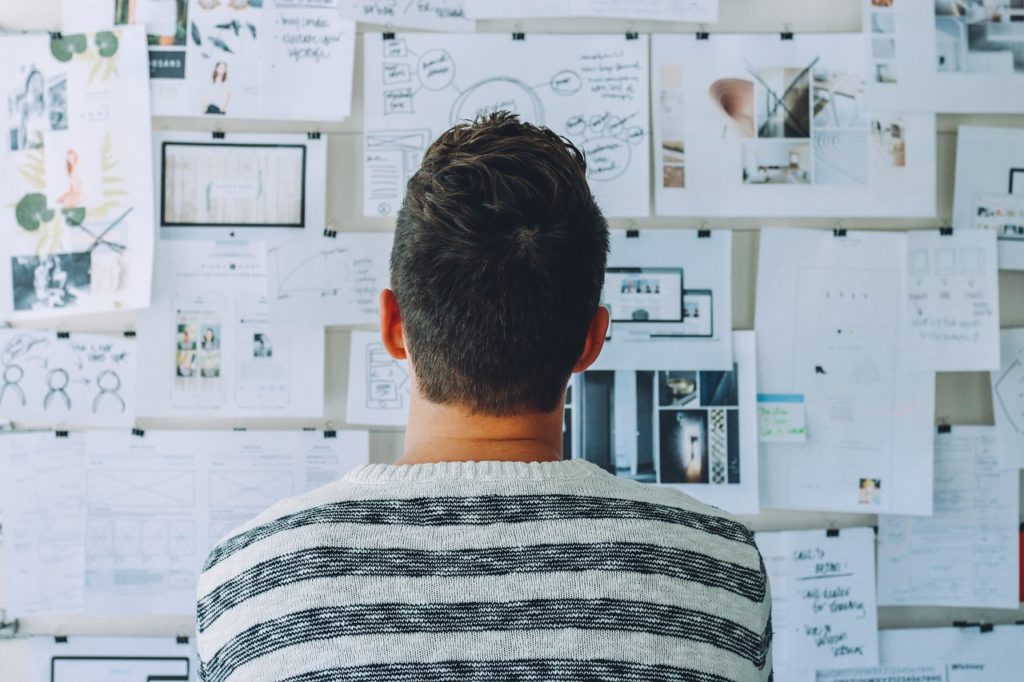
Aquarium set up planning
What type of aquarium do I want?
Let's first come to the question of what type of aquarium I want and what ultimately motivates me to buy a tank. With the answer to this question, you can then move on to the planning and setup. If you already have precise ideas, you can confidently skip the next few sentences. Everyone else should read this now.
Should it be community aquarium with lots of different species of fish, or is there a species aquarium with only a few species that also live together in nature. The majority of aquariums in our country are community tanks and as a beginner, these are also easy to set up. Usually the selection of fish is larger.
Nevertheless, the following applies: only keep fish together that also have the same living conditions. These include above all water values like GH, Temperature or also KG value. You can also find all types of aquariums there.
Once you have decided on the type of tank, it is important to choose an appropriate aquarium.
Selection of the aquarium
When making your choice, you need to ask yourself the following questions:
How much space do I actually have? How big should my aquarium be?
Basically, the larger it is, the easier it is to maintain and operate it. Above all, the operation makes it easy because you can get the water values more constant. The more water the better and the easier it is to keep the balance. This is where a big mistake is often made by beginners. They usually buy a small tank to "test" and then have a lot of problems. A size of 200 liters or more is optimal in our opinion.
Where can I set up my aquarium?
You also have to think carefully about this question, because space is just as important. The room should not be too cold, because that would make it difficult to maintain the water temperature, which is necessary for ornamental fish and aquatic plants. This is usually between 24 and 28 degrees Celsius. The greater the temperature difference, the more energy has to be used. It may even be that the heating in the pool is no longer sufficient.
In addition, one must also consider whether it is a bright or rather dark place. One should avoid direct sunlight. As a rule, this only accelerates the growth of the algae. That's why the same applies here, preferably shady and dark.
The question of statics
An aquarium is heavy. A few kilograms can accumulate in a fairly small area and not every floor can support an aquarium. This can be a problem, especially in older buildings. That's why we recommend you talk to a structural engineer or look in your documents to see what the square meter carries with you. Of course, this also depends entirely on the size of the tank. With a 60 liter aquarium you certainly don't have to worry. At 500 liters but already. When setting up an aquarium, you must also pay attention to this.
The question of form
Here, too, there are a few things to decide and to think about carefully. The basic shape is 80 percent certain to be a rectangle. But there are also aquariums with panorama glass on the front or also cubes and other special shapes. A corner aquarium is also possible. Each form has its advantages and disadvantages, although there are some forms that have more disadvantages. A corner aquarium can be quite beautiful and space-saving, but it is also quite difficult to handle in terms of cleaning. Who's going to the back? A free-standing cube also has something, but it is difficult to connect the technology there, since there is usually no electricity in the middle of the room. The height of the aquarium is also different. There you also have to consider the type of fish that find their home there. Discus or the Scalar needs a lot more space in terms of height, because they simply have a tall shape.
Ultimately, of course, it should also fit the room. We don't want to go into detail about the quality here. There will be more about this in part 2 on purchasing.
The question about the cupboard
An aquarium should not stand on the floor, because then you couldn't really see anything of your fish and that's exactly why you have an aquarium to enjoy it every day. So a suitable base cabinet is needed. This is usually available in a set and if not, you can also order it separately.
But if you want an existing benefit, you have to look at the load and weight again. Not every chest of drawers supports the weight of an aquarium.
Of course, you can also build an aquarium cabinet or a shelf yourself. There are either options made of wood, metal or stones.
The question of the price?
Here, too, you should think carefully about what you are doing. You can't just count on the purchase of the pool, all the technology, the furnishings and decorations, the fish and the plants, but you also have to think about the maintenance. Not only does the water come together, which is needed due to the partial water change that occurs again and again, but also a lot of electricity. These values depend entirely on the size. Nevertheless, one should not be alarmed here either. Basically, the power requirement can be calculated at least to some extent. All you have to do is add up the consumption of the individual devices. This wattage can then be converted into kWh and then multiplied by the electricity price per kilowatt hour. Then you take this value and calculate it for the day, the week, the month and then for the year and you already know approximately what it costs you to maintain a 500 liter tank, for example.
Don't forget those either Cost what the consumption of feed, fertilizer, Co2 or from new plants or fish. Here, too, you always have to spend something.
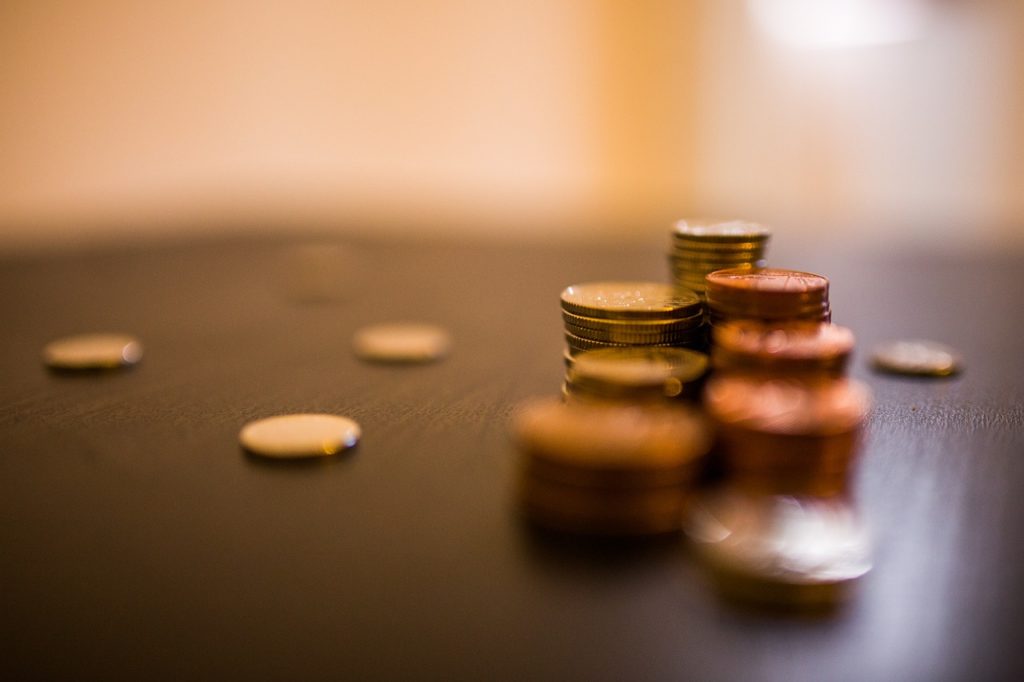
Setting up an aquarium: planning the technology
Of course, an aquarium also requires a lot of technology. We briefly present the most important things to you. Further details can then be read in our wiki.
- Aquarium filter: The water is also clean and circulated, it needs a filter. This can either be installed outside in the base cabinet, or it can also be hung in the aquarium as an internal filter. Depending on the size, you will quickly reach your limits with an internal filter, as there is simply not enough space for filter materials and pump. In addition, you want to use the space in the pool and not lose the technology. Our advice: From a size of 120 liters we would take an external filter. Guide to filtering and filter technology
- Aquarium heater: Of course you also need a heater in the aquarium. This is usually realized by a heating element in the pool. In larger systems, these can also be located externally in the filter.
- Aquarium lighting: This is also necessary so that the fish and plants are doing well. As a rule, the lamps are already included with the pool and installed in the lid. If they have an open pool, then of course not. Nevertheless, a special lamp must also be installed there.
- osmosis system: Not all aquarists will need an osmosis system, at least not if they are still beginners. With certain species, however, this makes sense, because otherwise you will hardly be able to get the water parameters in such a way that the fish can tolerate it. Especially with discus and co, it can be difficult to meet these needs in some areas with hard water. It's the same with most fish.
- Fertilizer system Co2: Here, too, it is more a matter of waiting a bit at the beginning. Personally, I can only say positive things about fertilization with Co2, but you certainly don't have to buy such a system right at the beginning. After all, you have to have pH monitoring to control everything optimally.
- floor wash: A pair of floor wash should not be confused with heating. It is basically nothing more than underfloor heating for the aquarium. Here cables run in the bottom of the pool. Especially when it comes to plant growth, you can create great advantages here. I would bear these rather low costs right away.
- heating controller: If you have a floodlight on the one hand and the heating element on the other, it is also possible to control this via a controller. This does nothing but create a balanced relationship. The floodlight shouldn't always be on, but also off from time to time. It can also happen in particularly warm places or in summer that the temperature with the floodlight is already too high. This is monitored by the controller.
- Feeder: An automatic feeder is only needed if you want to go on vacation and nobody has to feed you. Otherwise I think you can save this one.
- Temperature control: This is very important. It doesn't have to be a high-tech device, a simple thermostat is often enough.
An aquarist also needs a lot of other little things like water tests and the like.
Setting up the aquarium: Planning the setup and decoration
Now we have decided what kind of pool it needs to be and what kind of technology items we need. Now we come to the decoration and furnishing. Here you can only recommend making a precise plan. A sketch of what the pool should look like later. Furnishing examples can be found in abundance in the aquarium forums or in books. We also recommend going to an exhibition or maybe stopping by the nearest aquarium club. There are also some examples of what this might look like.
Here are a few tips:
- Build in ascending order from front to back: always ascend from front to back. This is the only way you can see everything later.
- Build in steps: You can easily build in steps with stones
- Vary them with objects: don't just take stones, but also roots and co.
- Build shelters, too: Many species of fish love to be able to hide.
- Be creative but stick to nature: you should recreate the habitat as it is in reality.
- A planted aquarium is not necessarily something for a perch!
- Choose the right plants: Here, too, you have to pay attention to how big they will be later. When you buy them, they are usually still small, but that can change.
- Probably the most important tip is to get plenty of suggestions.
If you have taken all these things into account when planning the setup of an aquarium, then you are ready to start the purchase.
As you can see, planning is certainly one of the most important points when setting up an aquarium. Mistakes made here cannot be undone later.
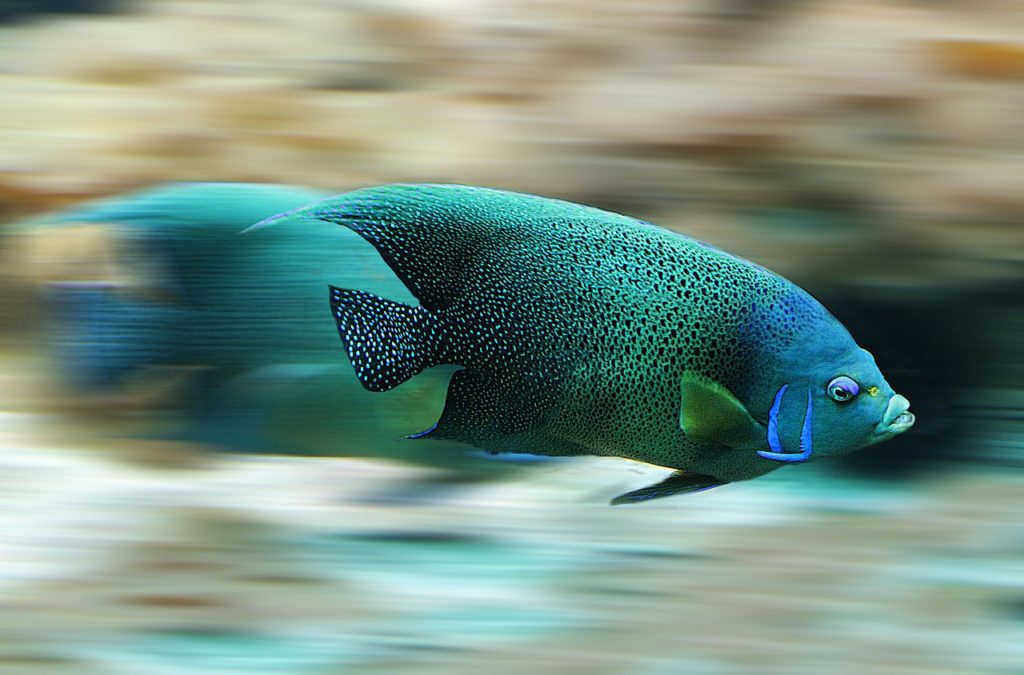
Setting up an aquarium Purchasing and advice
After it in the first part of our step-by-step guide to set up one Aquariums around planning went, let's now take a look at that Purchasing the components throw. A little advice can't hurt here either. Not only the price is in the foreground here, but also the necessity and the quality. But first let's take a look at the possibilities where you can buy aquarium accessories.
Buy aquariums and accessories, but where?
- Buy an aquarium from a specialist dealer: There are more and more retailers specializing in the construction and sale of aquariums. Most of the pools are built by themselves, or sometimes simply bought. Here you will find either own brands or well-known brands such as Juwel and Co. The big difference is not only in the price, but mostly also in the quality.
- Buy aquarium on the internet: Here, too, there are plenty of dealers who sell and ship aquariums today. Unfortunately, there are also some black sheep that you should rather keep your hands off. So do your research and get opinions. Often you can also find reviews from other customers or they already know the pool. Then you can also make bargains here. Attention, always calculate the shipping costs, because freight usually still comes to the aquarium. There are also more and more aquariums to be found on Amazon and Ebay. Lots of online shops are added.
- Buy used aquarium: As already mentioned above, there are more and more offers of used aquariums that you can buy. But you should be familiar with this in order to be able to determine the quality on the one hand and the age on the other. After 10 years I would no longer think of a used aquarium, because the danger of leaking or, in the worst case, even bursting is enormous. So you should be well informed here.
- Buy aquariums at a fair or exhibition: More and more exhibitions and trade fairs, as well as exchanges can also be found in the field of aquaristics. Be it the one in Duisburg or the Aqua Fisch in Friedrichshafen on Lake Constance. Here you can usually get good trade fair offers. There are also plenty of used cymbals to buy on the stock exchanges.
- Wholesalers use: There are also plenty of wholesalers where you can not only buy aquariums, but also accessories and fish. Here it is also worthwhile as a private person to simply inquire. Fish in particular can be bought quite cheaply from the wholesaler around the corner.
Of course, this also applies to the area of accessories, although we would rather rely on the Internet there. The prices here are usually unbeatable. No matter whether via Amazon, Ebay or directly from a wide variety of dealers. You can quickly save hundreds of euros here.
The risk here is also lower than when buying a pool. Accessories can be exchanged quickly. So if you want to save something, you can make a lot of bargains here. Savings can also be made via the aquaristics forums on the Internet. There is usually a flea market area where you can buy used things or even exchange them.
Even plants and fish can now be bought online. We have already been able to purchase plants of good quality at very low prices, although there is also a certain risk here. The beginner will also want to see the plants in real life. It's worth going to the specialist market around the corner.
When it comes to fish, we would be wary of buying them online. The reasons should be obvious here. Above all, the transport can harm the sometimes sensitive creatures. Then it's better to go to the wholesaler.
Setting up an aquarium: Tips for buying an aquarium:
Now we come to some tips when it comes to buying an aquarium.
- Inform yourself carefully: As already mentioned in our first part, information is the be-all and end-all. This is the only way you can form your own opinion and you won't be tricked by a dealer. In addition to our guide, there is of course also the possibility of information in the many forums and also in the aquarium club around the corner. There are more and more aquarists in the meantime and it shouldn't be difficult to talk to someone in their circle of acquaintances.
- Find support: Don't they all go out and buy a used pool, for example. Take an experienced aquarist who can support you here.
- Don't always buy the cheapest: The cheapest is not always the worst and the most expensive is not always the best. Nevertheless, you should be careful that you prefer quality for certain things and also spend a few euros more. This can quickly pay off. Above all, the pool itself should be good.
- Save where it makes sense: There are certain things that you can simply save on and it also makes sense there. Examples would be items that can be exchanged quickly. Everything that is external to the pool can be quickly replaced.
- Aquariums in a set: Again and again there are good offers in sets from the retailers but even from the discounters and online shops. There you have a whole range of what you need to set up. The prices are usually cheaper than buying them individually.
- Build decorative items yourself: Of course you can also build a lot of things yourself, especially when it comes to decoration. It's time to be creative again. We will also present some suggestions here in the next few weeks.
- Collect decoration items: Stones or roots and bricks are perfect for decoration. You can collect some of these yourself. Here you just have to be careful what belongs in the aquarium and what doesn't.
Finally, a word about the aquarium you build yourself, because this is also possible. But here you have to bring some experience with you. Above all, gluing the panes is not so easy that it later withstands the water and the pressure. For beginners, we therefore advise against doing this yourself. But what you can do yourself is the base cabinet. You can find lots of building instructions here. We will also present them to you.
Setting up the aquarium Preparation
The third part of our series is about that Preparation. Here we want to go into the preparation for setting up and setting up the aquarium. This overview takes you to the other parts of the step-by-step instructions.
Before you can set up the pool, you should prepare certain things so that you don't get into trouble later.
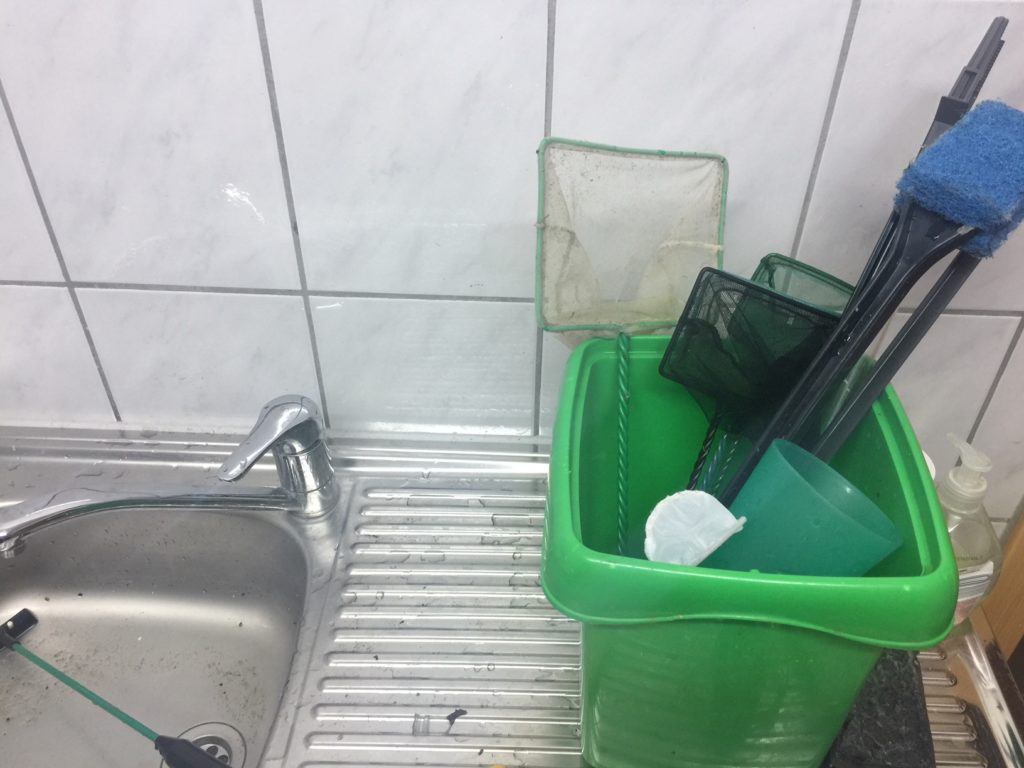
Make a checklist
First a word about the things you need to have to set up an aquarium. As we have already seen in the previous parts, there are a few things to think about. To make sure you don't forget anything, it's a good idea to make a checklist. You can then process them one by one. It is also clear that you still need fish at the beginning, because they only come into the water after the break-in period. But you should have a lot of little things beforehand. Above all, this includes the entire technology. This is the only way to carry out the installation properly and not have to reach into the pool again and again later.
- Aquarium with cover and lamps
- Timer for light control
- Base cabinet with space for technology
- Multiple power strip
- Filter
- Heating
- Floodlights
- pad for the pool
- measure temperature if necessary
- Sand or gravel for the substrate
- decorative objects plants
- water treatment agent
- water tests
- detergents and aids
Of course, their list can be much larger. With a set you have the advantage that everything important is usually included. Once you have completed your checklist and there are no more outstanding items, you can start cleaning.
- Stable glass aquarium with 4 mm glass thickness and 54 L volume (dimensions: 60 x 30 x 30 cm) - thanks to the simple installation and the extensive technical accessories, ideal for aquaristic beginners
- Robust cover in a stylishly curved design with a practical feeding flap (dimensions of the aquarium including the cover (WxHxD): 61 x 35 x 31 cm)
- Including durable and energy-saving 10 watt LED light with day/night light switch and reliable 50 watt heater (preset to 25°C)
- Powerful 3,5 watt Tetra EasyCrystal filter box for modern, clean and efficient filtration - with 2 filter cartridges that can be easily replaced without getting your hands wet
- Scope of delivery: 1 x Tetra Starter Line 54 L aquarium complete set (incl. 10 W LED light, 50 W heater, EasyCrystal FilterBox 300, 2 filter cartridges, 100 ml TetraMin, 100 ml Tetra AquaSafe)
- 🐟【Built-in filter system】: 300L/H, with high-efficiency filter cotton and integrated pump for effective oxygenation in water purification.
- 🐟【LED Lighting】: An energy-saving 1.5W LED strip with a mixture of white and blue light, mimicking natural light, protecting fish colors and promoting plant growth.
- 🐟【Package Contents】: Aquarium with cover, integrated water pump, biochemical cotton, nano cube, LED lighting.
- 🐟【Highly ornamental】: The clear curved glass design provides a wider viewing angle, suitable for shelves or desks in children's rooms, living rooms, offices, etc.
- 🐟【Capacity and Size】: 30L (L38.5*W24*H39CM) - Ideal size for beginners or kids.
- ✅ 𝐏𝐑𝐄𝐌𝐈𝐔𝐌 𝐐𝐔𝐀𝐋𝐈𝐓𝐀𝐄𝐓: When manufacturing our glass basins, we attach great importance to high quality and good workmanship, so that you receive a product that you are completely satisfied with
- ✅ 𝐒𝐓𝐀𝐁𝐈𝐋 & 𝐒𝐓𝐎𝐒𝐒𝐅𝐄𝐒𝐓: The diamond-cut edges of the water tanks are bonded with silicone and are particularly resistant to impacts. A robust glass tank for your fish
- ✅ 𝐒𝐈𝐂𝐇𝐄𝐑𝐇𝐄𝐈𝐓𝐒𝐆𝐋𝐀𝐒: The walls of our aquarium tanks are made of innovative safety float glass. The fish tank is therefore not susceptible to scratches and has a particularly smooth surface
- ✅ 𝐒𝐔𝐄𝐒𝐒- 𝐔𝐍𝐃 𝐒𝐄𝐄𝐖𝐀𝐒𝐒𝐄𝐑𝐆𝐄𝐄𝐈𝐆𝐍𝐄𝐓: It doesn't matter whether it's freshwater or seawater fish you will find a suitable aquarium with us. Our aquarium tanks are suitable for both
- ✅ 𝐕𝐄𝐑𝐒𝐂𝐇𝐈𝐄𝐃𝐄𝐍𝐄 𝐆𝐑𝐎𝐄𝐒𝐒𝐄𝐍: Our rectangular aquarium tanks are available in many dimensions. Choose your suitable fish tank from 10 different sizes
Cleaning of the pool and also the decorative objects
Before we can set up and then set up the aquarium, we should clean it thoroughly. Depending on the size, this may not be that easy. In any case, there should be two of you here, because one corner of the pool is quickly destroyed and it becomes unusable.
You should only clean with water and not use chemicals. This could later degrade the water quality or even render the water unusable. Many toxic substances for the fish get into the water with it. Incidentally, this also applies later. Everything that has to do with cleaning should be done without chemicals.
It is best to clean your tank with a hose and a soft sponge. Hard cleaning devices should also be avoided here, because scratches can easily appear on the pane.
Furnishings also need to be scrubbed thoroughly. Here you can also clean a little harder. For certain things such as roots or stones, it is advisable to boil them. This avoids a quick turbidity in the aquarium.
The sand or gravel that serves as substrate should also be cleaned. Although most high-quality substrates say that they have already been cleaned, we clean them again. It is advisable to take a sieve and then rinse the gravel or sand in it. Here you can also rinse everything several times. The cleaner the sand, the clearer the water will remain when setting up. So take your time here.
Set up the aquarium and check for leaks
Here, too, you should already make a precise check of the pool during cleaning. What do the silicone joints look like? Is the pool damaged? Are there scratches in the glass? Is the aquarium sealed?
You won't be able to answer the last question that easily, because you usually only find out when it's completely set up. If you have the opportunity to fill it with rainwater in the basement or garage, then you should do so.
Check devices and technology for function
You should also take your time here. Take your time to check whether all your devices are fully functional. You can easily test this. Of course, you should always read the operating instructions and familiarize yourself with the functions. For example, you must not run the filter empty. And neither does the heating rod.
All these steps should be carried out step by step to avoid nasty surprises later. There's no point in setting everything up quickly only to realize later that you've made a serious mistake.
Once everything is done, it's time to actually set up the tank and, of course, to set up the aquarium.






